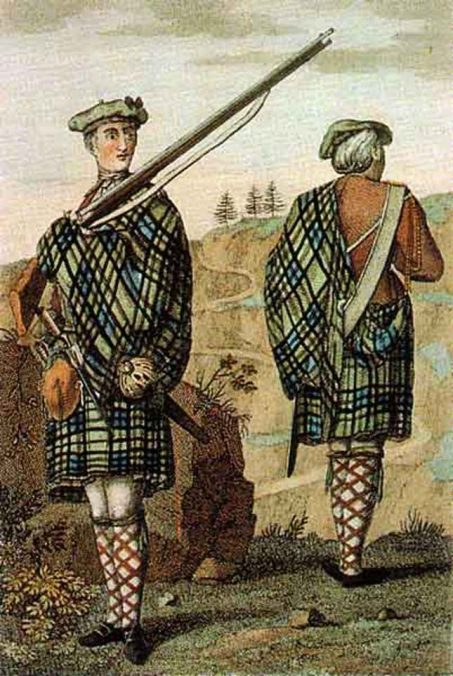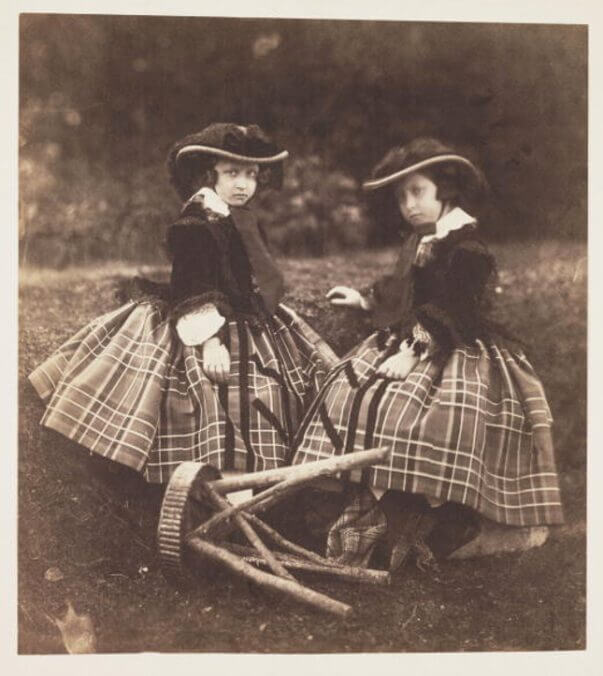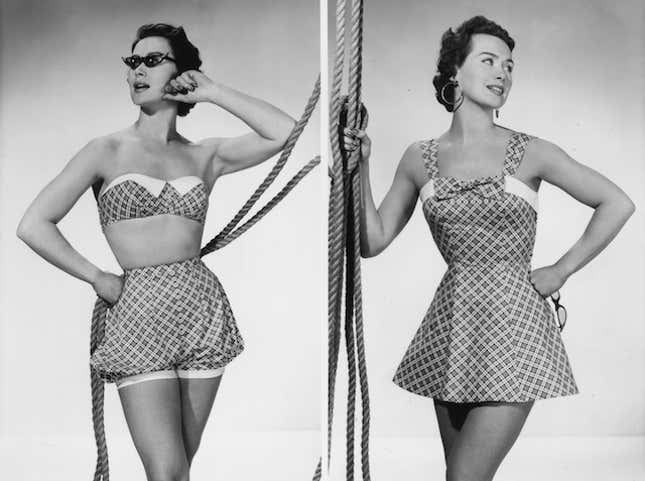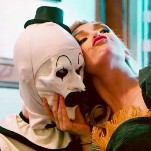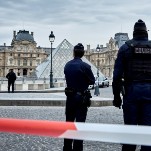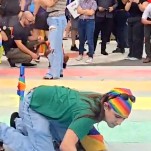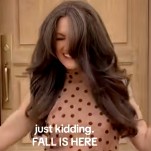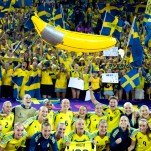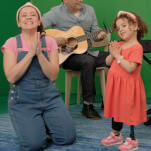The Violent, Royal Story of How Tartan Became Your Favorite Plaid
In Depth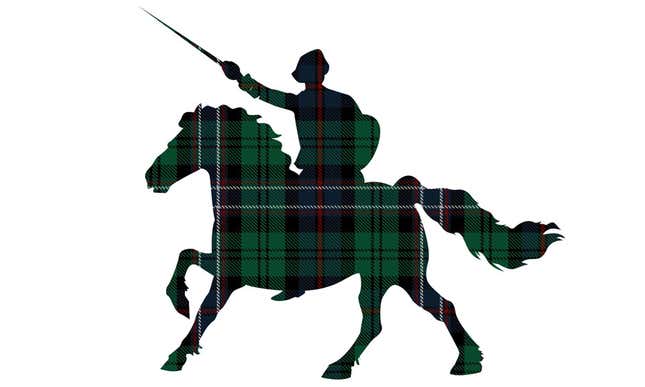

Tartan in modern fashion appears everywhere from school uniforms to McQueen runways, but the road to this ubiquity starts many centuries ago, with 15th-century Scottish women weaving this particular patterned fabric at home. It wasn’t until the early 19th century that tartan would start weaving its way into American women’s fashion, from shawls and bonnet trims all the way to more recent menswear-inspired suits (think Cher’s in Clueless). And today, tartan occupies a relatively unique position: completely distinctive, full of aesthetic signal, but somehow flexible enough to fit any occasion.
To understand how we got here, let’s start with the definition.
Tartan is defined by the Scottish Register of Tartans as “a simple two-colour check to which the designer adds over-checks, bands and stripes in contrasting colours. These should be arranged to result in a balanced and harmonious pattern. A tartan pattern is a geometric design, made up of blocks of solid colour which join on the diagonal, radiating across the fabric like spokes, and with each block of colour surrounded by blocks of mixed colours. The blocks form a pattern, reflected or repeated many times across both the warp and weft of the cloth.”
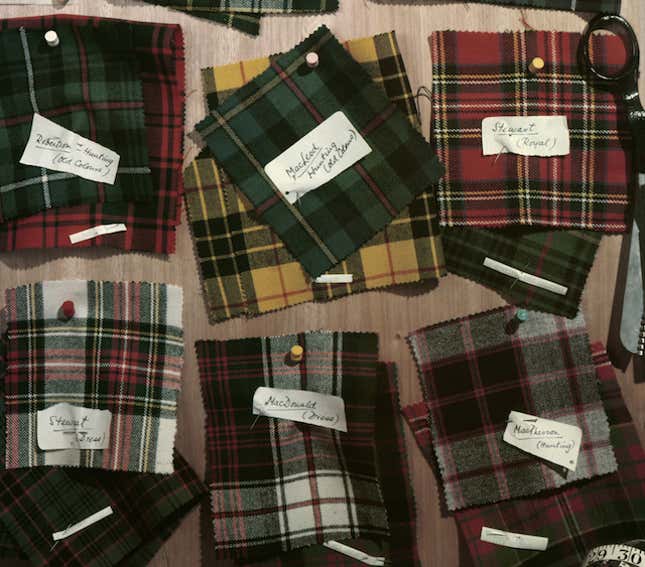
It’s a very specific definition. But essentially, tartan is just a system of interlocking stripes woven regularly into the fabric in both the vertical and horizontal sets of threads. The exact size and color of each stripe is called the sett. It’s that regular, geometric quality to the sett that’s particularly important in separating tartan from other plaids.
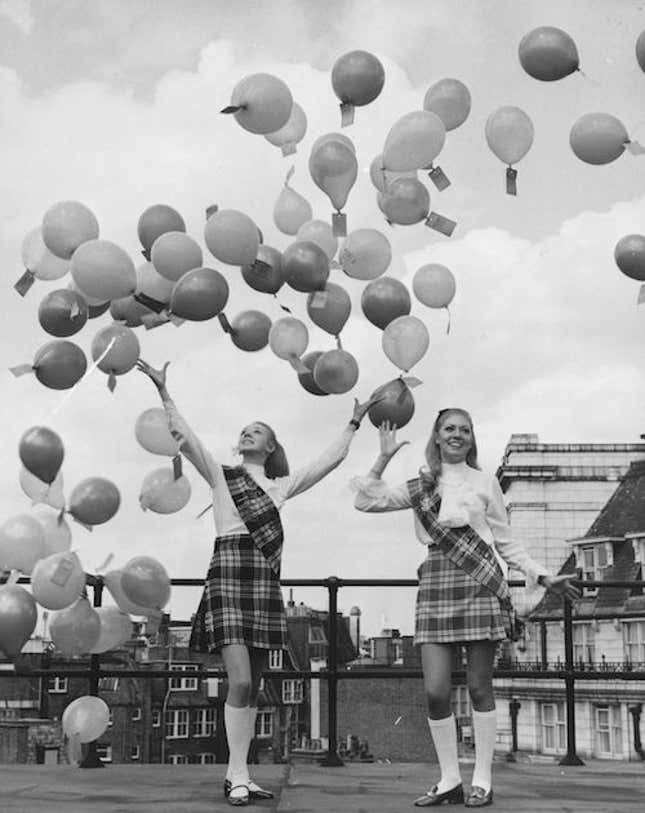
While all tartans are plaids, not all plaids are tartans. (Other types include madras, gingham, houndstooth.) In the Scottish Highlands, the term “plaid” originally referred not to a type of pattern but to a large piece of woven fabric (like a blanket) that could be worn in several ways, by both men and women. Its most famous use, as a “belted plaid,” evolved into what we now know as a kilt. Plaids were usually but not always actually plaid-patterned and were sometimes striped or solid instead.
At some point between the adoption of the plaid (pictorial evidence shows them as common garments by the 14th century) and the 19th century, “plaid” came to mean not the garment but the pattern itself. Fabric was woven locally, often at home: so, the change in terminology was slow, and “plaid” meaning pattern and “plaid” meaning garment were used interchangeably well into the 18th century. By 1600, “tartan” was being used in reference to its distinct pattern of colored, cross-directional stripes.
(It’s worth noting that plaid fabrics have existed in other places besides the UK for a very long time: as far back as 3000 BC, according to the Scottish Tartans Museum of North Carolina. But the particular political frenzy surrounding tartan in the 18th and 19th centuries is a direct contributor to the pattern’s ubiquitous use today, particularly in America.)
After the Act of Union in 1707, England and Scotland became united, and tartan became a national symbol of dislike for the merger. The pattern’s nationalistic associations began to be enshrined by romanticized descriptions of men wearing plaids (the garment), from Gaelic praise poetry about “luchd nam braecanan fheilidh” (the men of the pleated tartans) to the writing of Walter Scott. In paintings, plaid-wearing Highlanders were often depicted on a cliff or rocky outcropping, the wind blowing the pleats of the belted plaid or a woman’s shawl astray. In real life, the home-woven fabrics would have shown much more variation, but in these images the tartans are often simple, with only a couple of colors: often blue/green or red/black.
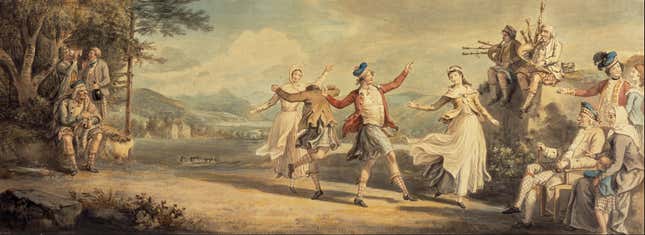
During the Jacobite Rising of 1745, tartan became explicitly linked to political causes. That year, Prince Charles Stewart, challenger for the British throne, adopted traditional Highland dress as his army’s uniform. (Charles himself did not wear a belted plaid until after his defeat, but did wear tartan.) In possibly the most famous portrait of “Bonny Prince Charlie,” he is wearing a fashionable suit of red/black tartan with extensive gold trim. The tartans on illustrations of his regiment also often include red, but are more varied; they were probably homemade, as it’s difficult to produce uniform materials for a rebellion.
-

-

-

-

-

-

-

-

-

-

-

-

-

-

-

-

-

-

-

-

-

-

-

-

-

-

-

-

-

-

-

-

-

-

-

-

-

-

-

-

